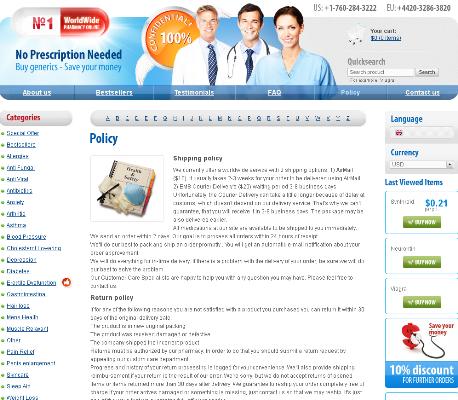Lexapro Vs. Other Ssris: a Comparative Look
Efficacy Face-off: Lexapro Versus Other Ssris
Many patients describe a switch-and-search story: they try one SSRI, face side effects or limited benefit, and move on. Clinical trials and meta-analyses suggest escitalopram often matches or slightly outperforms other SSRIs on average response and remission rates, which can make clinicians favour it for initial therapy.
Head-to-head studies are limited, so differences are modest and patient factors — comorbid anxiety, prior response, tolerability — usually guide choice. Teh clinician's art is to balance small efficacy gains against side-effect profiles and individual preference.
For severe depression some studies indicate escitalopram achieves remission slightly more often, but the difference is necessarily small and not uniform across populations. Discuss risks, prior response, and goals to aquire the best fit.
| Drug | Typical Finding |
|---|---|
| Escitalopram | Slightly higher remission in some studies |
| Other SSRIs | Similar efficacy overall; variable tolerability |
Side-effect Showdown: What Sets Lexapro Apart Clinically

Patients often judge antidepressants by tolerability. Teh side-effect lists for SSRIs overlap — nausea, headache, sexual dysfunction, insomnia or somnolence, and occasional weight shifts. For many, these symptoms define adherence and mood outcomes.
Clinically, lexapro (escitalopram) is often singled out for a milder tolerability profile; studies report lower discontinuation due to adverse effects compared with some older SSRIs. Activation and anticholinergic burdens tend to be less pronounced.
Side effects remain individual and dose-dependent. Sexual dysfunction can still occur and may be the most common reason to switch. Gastrointestinal complaints usually improve after weeks, but clinicians should monitor and adjust titration when needed.
Shared decision-making matters: patients and clinicians balance efficacy, side effects and life demands. Watch for noticable changes in energy, weight and libido, and reassess therapy; small dose tweaks or switching can restore functioning and preserve long-term wellbeing and hope.
Dosing Dynamics: Titration and Treatment Length Differences
Starting treatment often feels like stepping onto a trail; clinicians typically begin with low doses and monitor response. For many, lexapro offers a simple once-daily regimen and eases initial concerns.
Titration speeds vary: some SSRIs demand gradual increases, while others allow quicker rises. Occassionally, side effects dictate a pause or dose reduction, emphasizing individualized care plans and follow-up with adjustments.
Maintenance durations range: acute response, continuation for six to twelve months, and longer for recurrent episodes. Elderly patients often recieve lower targets and slower changes.
Planned discontinuation matters: slow tapers reduce withdrawal risk, and clinicians weigh relapse history before shortening courses. Shared decision-making ensures treatment length suits each person’s goals and risks over time thoughtfully.
Safety Snapshot: Withdrawal, Long-term Outcomes, Risks

Clinicians and patients often weigh safety beyond efficacy, and lexapro has a generally favorable profile. Teh story includes predictable side effects and a need for informed consent about long-term expectations.
Withdrawal can be uncomfortable; gradual tapering reduces risk and patients should be monitored for dizziness, insomnia, or mood swings. Symptoms usually resolve but may persist; Occassionally specialised support is needed.
Long-term outcomes often show maintained benefit for anxiety and depression, yet risks like sexual dysfunction, weight changes, or rare bleeding require discussion. Regular follow-up helps manage risks and personalise maintenance.
Interactions Alert: Serotonin Syndrome and Medication Precautions
On a stormy night a patient noticed trembling and agitation after adding lexapro to another antidepressant; their story underscores how mixing serotonergic drugs can spark dangerous reactions. Clinicians and patients must watch closely.
Common culprits appear below; seek urgent care if symptoms start.
| Drug Category | Why |
|---|---|
| MAOIs | Can cause severe serotonin accumulation |
| Triptans | May precipitate excess serotonin |
| Opioids (e.g., tramadol) | Increase serotonergic activity |
| Herbals (St. John's wort) | Unpredictable interactions |
Always tell prescribers about meds, avoid abrupt switches, immediately call emergency services if high fever, rigidity, or rapid heartbeat occassionally appear.
Cost Clarity: Availability, Generics, and Choosing Personally
Pharmacies commonly stock escitalopram, so patients rarely struggle to find a prescription. Generic escitalopram has driven prices down, making adherence easier for those on tight budgets.
Insurance coverage, coupons, and patient-assistance programs can lower out‑of‑pocket costs, but formularies differ and switching brands may change co-pays. Occassionally a branded version is used when side effects or response vary.
Choosing personally means weighing price against past response, tolerability, and clinician advice; cost should not trump effectiveness. Talk with your prescriber and pharmacist about generics, samples, or alternatives to acheive both relief and affordability. Check pharmacy price‑comparison tools, inquire about manufacturer assistance, and consider mail‑order options to reduce monthly expenses and maintain continuity of care safely. MedlinePlus PubChem
<

